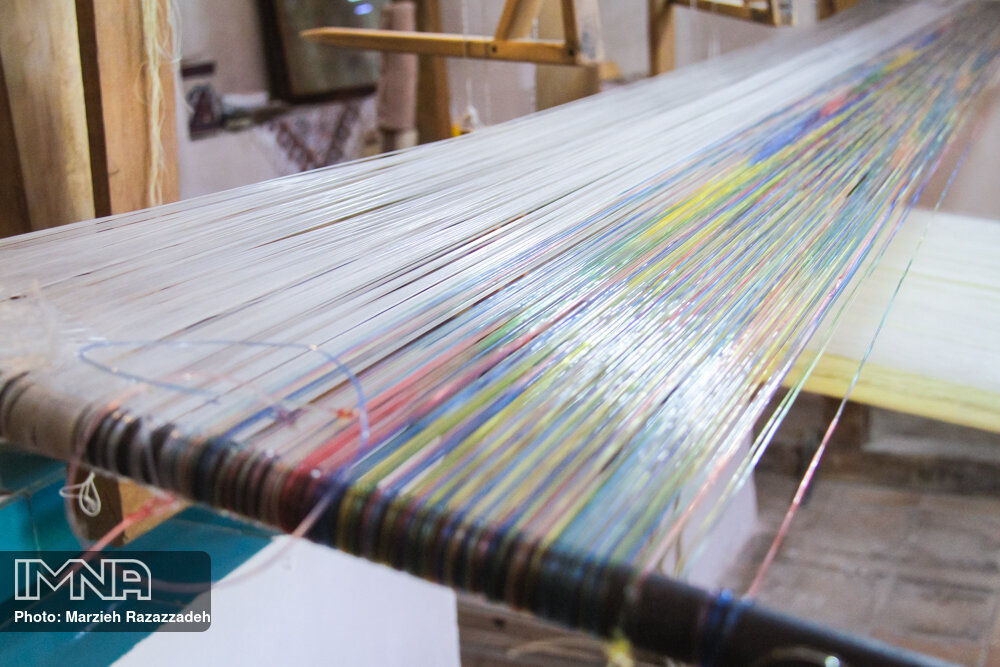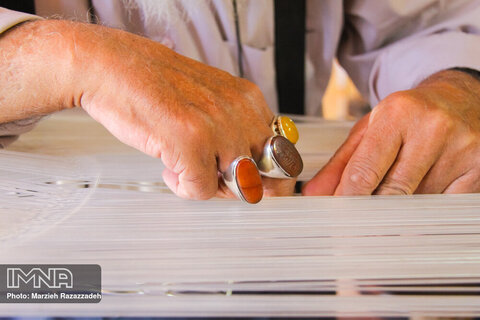Iran (IMNA) - The museum is located in a historical house spanning an area of 600 square meters, featuring 14 rooms. It has been meticulously designed to showcase the rich textile heritage of Kashan. In addition to housing hundreds of authentic textiles, local tools, and equipment created by ethnic communities, the museum also includes a handicrafts sales exhibition.
One of the main objectives of the museum is to shed light on the intricate process of textile production, starting from the raw materials to the weaving stage, all the way to the finished product. To bring this process to life, the museum utilizes life-sized wax figures, providing visitors with a realistic experience. Moreover, visitors have the unique opportunity to test their skills on a loom and interact with the exhibits. The museum also features contemporary works inspired by traditional weaving and design techniques, showcasing the fusion of heritage and innovation.
Kashan holds immense historical and cultural significance, being situated on a route that connects Tehran to the renowned destinations of Isfahan, Shiraz, and Yazd. This ancient town serves as a gateway to numerous captivating sights, intriguing stories, and picturesque surrounding villages waiting to be explored. Notably, the lavishly decorated houses of Brujerdi, Tabatabai, Ameri, and Abbasi are among the prominent attractions in the region.
Iranian global cities of handicrafts
Earlier this year, the World Crafts Council recognized both Kashan and Dezful as global cities of handicrafts. Kashan was acknowledged as the world city of traditional textiles, while Dezful received recognition as the world city of Kapu-weaving (or Kapu-bafi), a unique craft that utilizes palm tree leaflets. This prestigious recognition further solidifies the status of Kashan and Dezful in the realm of traditional craftsmanship.
The inauguration of the Persian textile history museum marks a significant milestone for Kashan, showcasing its commitment to preserving and promoting its rich textile heritage. Visitors can now delve into the fascinating world of traditional textiles, immerse themselves in the art of weaving, and witness the seamless blend of tradition and innovation in textile production.

Traditional textile industry in Kashan
For centuries, the art of textile production has been deeply ingrained in the culture and economy of Kashan.
One of the most prominent textile crafts that Kashan is known for is carpet weaving. The city boasts a long-standing tradition of creating exquisite handmade carpets. Skilled artisans meticulously hand-weave these carpets using traditional techniques passed down through generations. The designs are often inspired by nature, with intricate floral patterns and geometric motifs adorning the vibrant and intricately woven carpets.
Another significant aspect of the traditional textile industry in Kashan is the production of silk fabrics. Silk production has been practiced in this region for centuries, and the craftsmen of Kashan have perfected the art of silk weaving. They use fine silk threads to create luxurious fabrics that are known for their softness, sheen, and durability. These fabrics are often used for making elegant garments, scarves, and decorative textiles.
Kashan is also known for its production of traditional textiles such as brocade and velvet. These fabrics are characterized by their intricate patterns and luxurious texture. The artisans employ various weaving techniques, including jacquard and handloom, to create these exquisite textiles. The intricate designs and rich colors of brocade and velvet textiles make them highly sought after for special occasions and ceremonial attire.
The traditional textile industry of Kashan not only preserves the cultural heritage of the region but also contributes significantly to the local economy. Many families in Kashan are involved in textile production, with skills and techniques being passed down from one generation to the next. The textiles produced in Kashan are not only cherished within Iran but are also exported worldwide, gaining recognition for their exceptional craftsmanship and beauty.
In recent years, efforts have been made to preserve and promote the traditional textile industry of Kashan. Artisan workshops and museums have been established to showcase the skills and techniques involved in textile production. These initiatives aim to ensure the continuity of this ancient craft and to create awareness and appreciation for the cultural heritage it represents.
The traditional textile industry of Kashan stands as a testament to the creativity, skill, and dedication of its artisans. Through their intricate craftsmanship, they have created enduring works of art that capture the essence of Persian culture. The textiles produced in Kashan are not only treasured for their beauty but also serve as a reminder of the rich history and tradition that continues to thrive in this vibrant city.


Your Comment